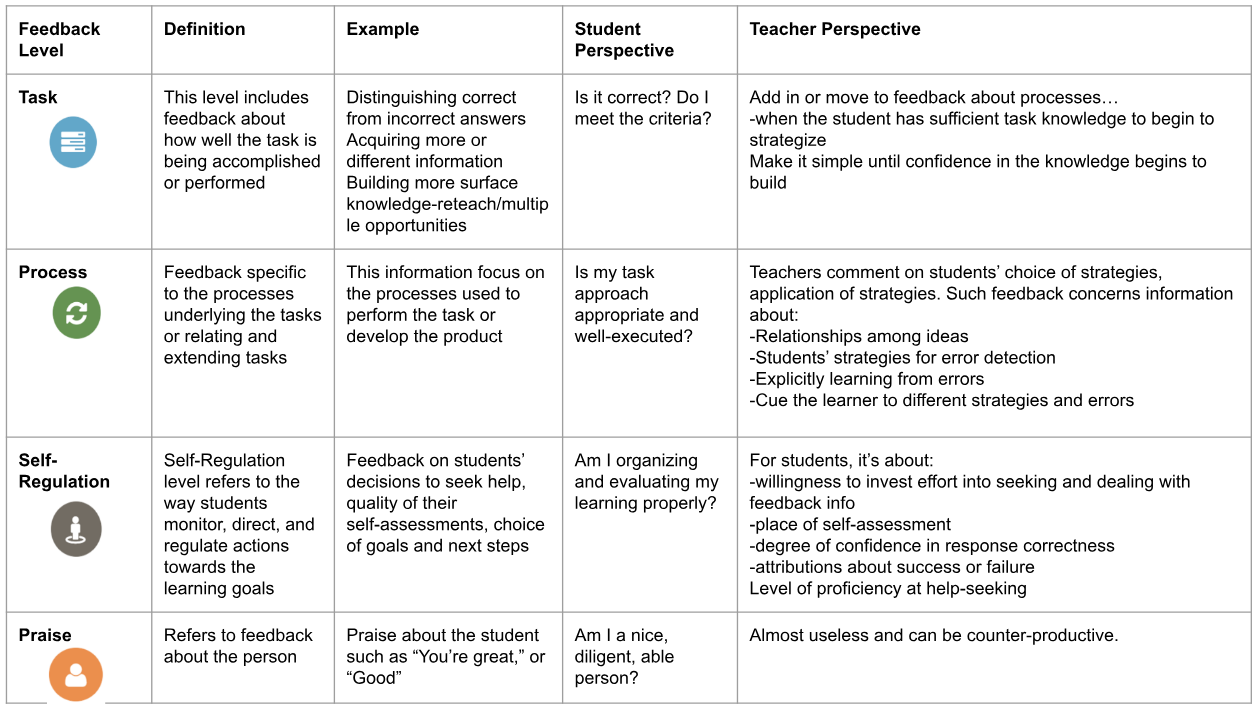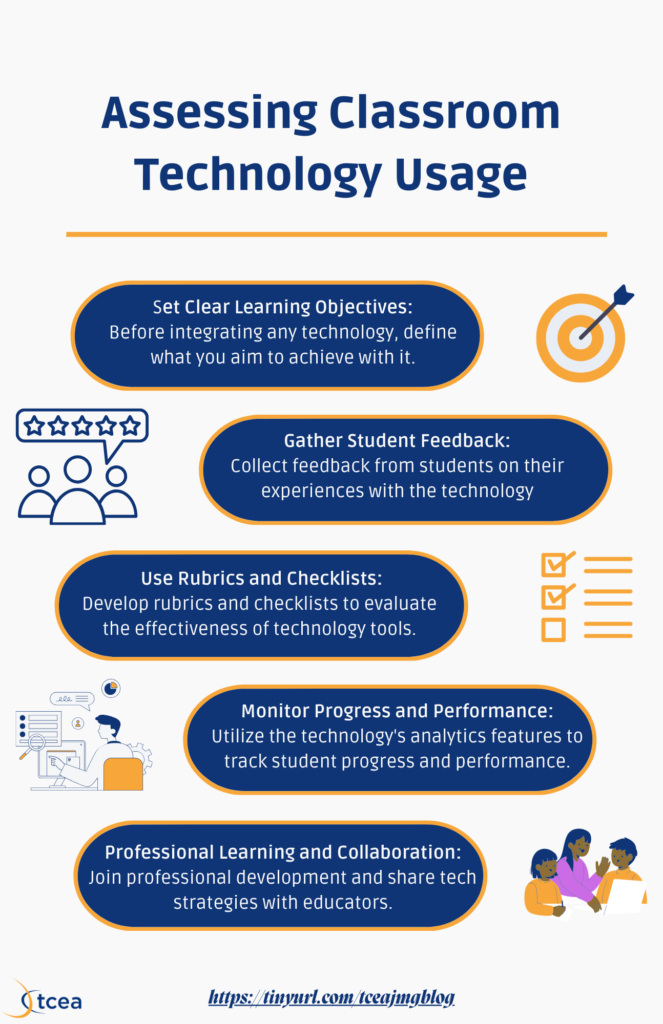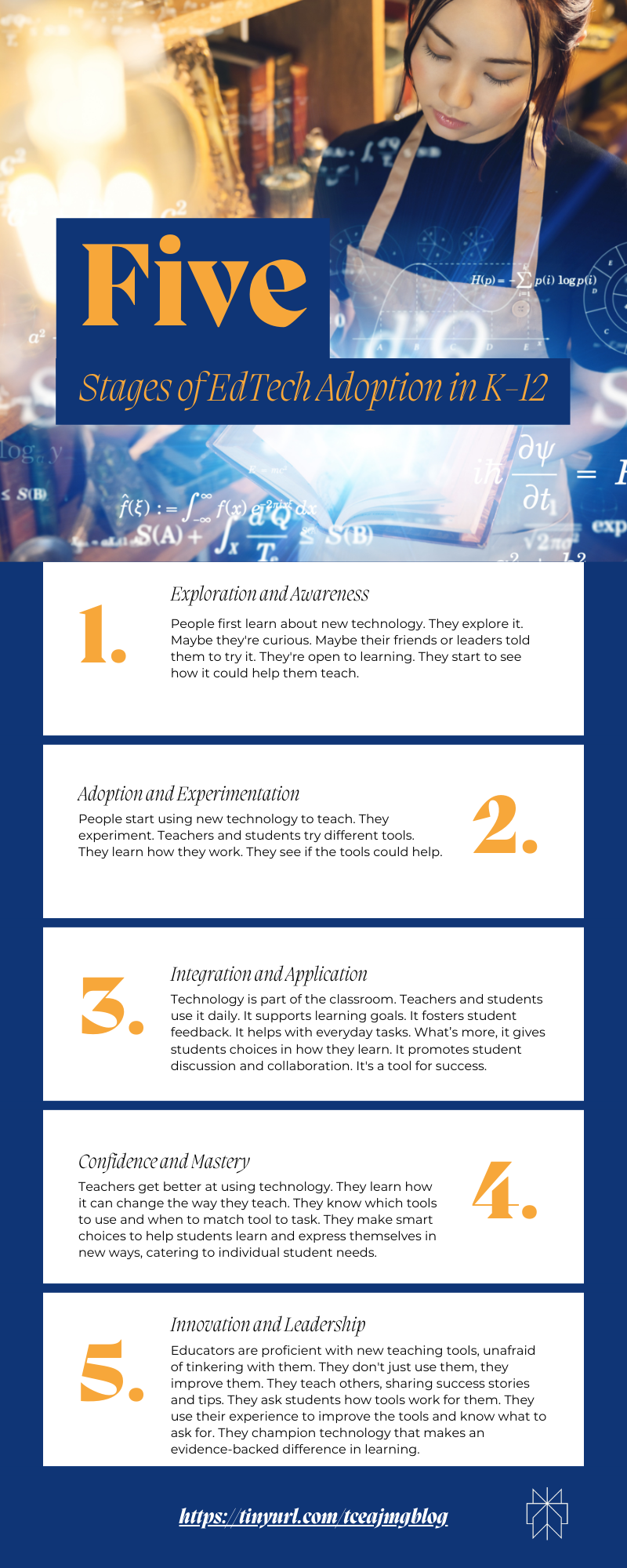Feeling tired and burned out by all the ed tech and AI-based news finding its way into your life? Take a moment to step back from all the chaos and reflect on the big picture. The Five Stages of K-12 Ed Tech Adoption will give you some context for understanding what you are going through. You will also get practical tips to help you harness the power of technology to create an engaging, effective student learning environment. Let’s take a look at:
- The five stages of ed tech adoption and how to navigate them with success
- Actionable strategies to integrate technology into your daily routine
- The latest trends in educational technology and how you can use them
Ready? Let’s review each of the stages.
Stage #1: Exploration and Awareness
Whether you are a new teacher, or someone new to using digital tools in the classroom, it’s easy to adopt a spirit of openness when it comes to ed tech. As a classroom teacher, curiosity and eagerness to see how technology can improve teaching and learning are your focus. This first stage may be described in the following way:
People first learn about new technology. They explore it. Maybe they're curious. Maybe their friends or leaders told them to try it. They're open to learning. They start to see how it could help them teach.It’s a time for exploration. Digital tools such as virtual reality, gamification, and artificial intelligence start to paint a picture of a more engaging, personalized, and efficient approach to education. Here are some ways you can get started with ed tech in your classroom:
- Build yourself a choice board of learning. Explore workshops and resources that focus on improving reading comprehension, using project-based learning, or effective classroom instructional strategies.
- Showcase your learning. Use tools like Blogger, WordPress, Google Sites, and/or Wakelet to create free portfolios of your learning. Showcase your teaching philosophy, resume, lesson plans, and videos of mini-lessons. Take the time to reflect on what you’re learning as you’re learning it.
- Conduct a self-assessment. Assess your teaching and learning environment, reflecting on classroom arrangement, media tools available, instructional strategies, and your comfort level with digital tools.
- Engage in knowledge sharing. Take field trips to meet with other educators to learn how they are using technology, and/or share how you are using it to impact teaching and learning. This can help build a strong sense of respect among you and your colleagues as well as a community of lifelong learners.
- Walk and talk. Encourage your colleagues at work to allow Walk and Talks to pair up and discuss topics relevant to blending technology into the classroom.
Remember that TCEA can assist you with all of this. TCEA’s Annual Convention & Exposition and focused events are an invaluable resource. These events offer a plethora of learning opportunities. You get to see other educators present on the latest educational technologies and walk the exhibit hall floor where new products are showcased. What’s more, the TCEA TechNotes blog offers practical tips, teaching strategies, and resources that align ed tech with high-effect size instructional strategies and technologies.
Stage #2: Adoption and Experimentation
Characterized by teachers starting to use new ed tech to teach, there is experimentation and trying to see how tools work. Some reject the idea that teachers should experiment in the classroom, but where else should they attempt this work? Every lesson is an experiment. Digital tools involve a hands-on approach where both teachers and students become co-learners. They try out different technologies, learn how they work, and then assess their effectiveness in facilitating learning. This suggests that students have agency, choice, and the ability to self-regulate their own learning.

Some ed tech tools and technologies that are often considered for experimentation in the classroom include:
- Virtual Reality (VR) and Augmented Reality (AR). VR can shift time and place for students when viewing historical sites or simulating scientific experiments to deepen their grasp of difficult subject matter. Digital technologies “can positively contribute to the digital transformation of schools.”
- Collaborative Online Platforms. Many educators use tools like Canvas, Google Classroom, Schoology, Microsoft Teams, OneNote, and Seesaw in their classrooms. Each of these tools offers new, different ways of interacting with students than before. How do you use these collaboration tools to facilitate teaching and learning? Doing so requires hands-on approaches that engage students in interactive feedback.
Assess ed tech tools in the context of back-and-forth conversations with students. Consider the suggestions in the “Assess K-12 Classroom Technology Usage” infographic as you work to implement new tools in your classroom.

Stage #3: Integration and Application
In this stage, technology is used routinely in the classroom. You may describe this stage in this way:
Technology is part of the classroom. Teachers and students use it daily. It supports learning goals. It fosters student feedback. It helps with everyday tasks. What’s more, it gives students choices in how they learn. It promotes student discussion and collaboration. It's a tool for success.At this stage, ed tech is a core element of the classroom. It scaffolds learning, encourages feedback, and makes teamwork at a distance possible. It makes tasks for teachers and students alike easier to complete. What’s more, it blends into lessons and activities and provides students with a variety of ways to interact with curricular materials to show what they know. It also provides the timely feedback students need to gauge their distance from target learning objectives.
Some examples in addition to those mentioned above include:
- Productivity Tools. My favorite category! Canva for Educator, Google Workspace for Education, and Microsoft 365 are a few tools to consider. Choose any one of these and you are well supplied with tools and digital forms for data gathering and analysis in the classroom.
- Teaching AI Assistants. Tools like Brisk Teaching, CuriPod, Diffit, Eduaide, MagicSchool.ai, SchoolAI, and many more can be very valuable. You might also consider ChatGPT for Educators and other AI tools that can be adapted for instructional use.
- Online quiz games and activity helpers. This includes digital tools like AhaSlides, Sembl, Quizizz, and UpSchool, as well as others too numerous to list.
More to Come
You may have figured out that only three out of the five stages were addressed! Stay tuned for more content in part two. In the meantime, here’s an infographic of the Five Stages of Ed Tech Adoption in K-12:



1 comment
This is a good resource for teaching ideas.